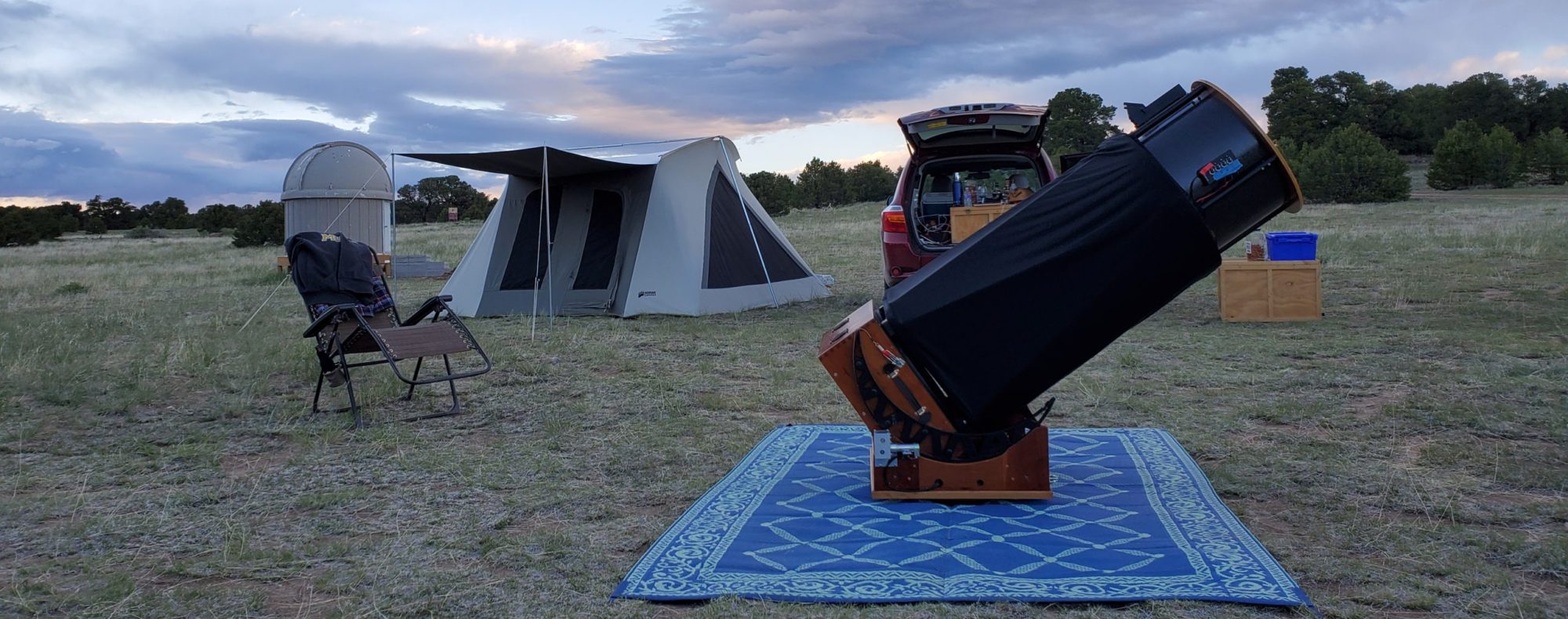I couldn’t wait for an opportunity to get out, not having observed since last cycle. This weekend’s late moon set was going to be my only chance! I packed up and headed out very early to watch the moon slowly go down in the West. During that time, I continually measured the SQML as more and more stars shone by the minute. I will try to write up my specific measurements in a future post. The highlight of this trip was definitely getting to see multiple background galaxies in the Beehive cluster! Time to eat drink astronomy!
eat

Apparently feeling fancy, Bentley and I brought Brie and Gouda cheeses with some crackers to snack on throughout the night. To go with it, we also had the standard fresh roasted peanuts I cooked earlier that day. Finally, to go along with the drinks, a canister of dark chocolate sea salt caramels rounded out our selection.
drink

For tasting, we had a real treat. First, we had an entry level Johnnie Walker whisky, the Black Label, which is a nice whisky for its price tag and is aged stated at 12 years. We then made a huge jump past the Double Black, Green, Gold and 18-year straight to the Blue Label. If you’ve never had the chance to try it, I would say the Blue is a very, very nice whisky, extremely smooth, no bite! After that, we went to the Single Malt Miyagikyo made by Nikka Whisky. This was another extremely smooth whisky, at less than half the price of the Blue Label, and one you definitely want to get a taste of if you like whisky. Finally, we had brought the Ardbeg 10-Year, but didn’t get around to tasting some on this particular night.
astronomy

Now for the Astronomy Observing Report. I slewed over to Messier 44, the Beehive Cluster in Cancer, shortly after setting up and aligning. M44, easily visible to the naked eye in dark skies, is less than 600 light years from our Solar System and is spectacular in very low power or with binoculars. My research at the eyepiece revealed there are several dim background galaxies visible through larger telescopes “within” the cluster. I decided to hunt down four of them, UGC 4526, IC 2388, NGC 2625 and NGC 2624.

UGC 4526 – I noted this is a small, dim, and slightly elongated WSW to ENE galaxy that is obviously nearly edge-on at 237x. I calculated the visual magnitude to be ~14.1 and SkySafari lists it as 210 million light years distant.
IC 2388 – This was the second Beehive cluster galaxy I hunted down and I noted that it was much dimmer and appears slightly larger than UGC 4526 due to being face on, round in shape, and I could only hold it with averted vision. SkySafari has it listed at 470 million light years distant!

NGC 2625 – I noted that this galaxy was dim with a brighter core, small, and shares a field with NGC 2624, similarly bright. I calculated the visual magnitude to be ~14.8 while SkySafari listed it at 15.16 and 210 million light years distant.
NGC 2624 – I noted this galaxy was dim, larger than its pair NGC 2625, brighter at times of good seeing with a hint of a brighter core. I calculated the visual magnitude to be ~14.06 while SkySafari listed it at 14.57 and 200 million light years distant.
Since this wasn’t a planned project for the night, I went ahead and stopped at four, but I can’t wait to get back to the Beehive cluster to see more of these neat background galaxies!
Bootes Cluster
I next moved over to Bootes and observed a grouping of six galaxies within about one half of one degree!!

I was really excited to really dig into this “cluster” of galaxies, even though they aren’t all actually interacting. To have 6 relatively bright galaxies in one, half-degree field is always a treat. I started off with NGC 5899 then worked my way NW.
NGC 5899 – This object was on the Herschel II AL Program so a great place to start. I noted this object was large, bright, with an even brighter stellar core. It is clearly elongated NNE to SSW 2:1. As seen above, this appears to be the brightest of the 6 galaxies observed.
NGC 5900 – I noted it is fairly dim, moderate in size, clearly elongated WNW to ESE, seen with direct vision, but better viewed with averted.
NGC 5896 – This galaxy is extremely dim, only seeing tiny glimpses over 20 minutes. It forms a small pair with NGC 5895.
NGC 5895 – Very dim, seen several times, all with averted, irregular.
NGC 5893 – This galaxy is large, round, and dim with no discernible core. A fuzzy halo is visible, slightly resembling a dim comet, with two very dim NGC galaxies in the field.
PGC 54347 – Large, dim galaxy with slight SSE to NNW elongation and no discernible core.
Before packing up, we tried and failed to see NGC 5889 and two others nearby. These will hopefully be the topic of another future observing session very soon!

Nice report-out. I’ll have to add some of these to my “to do list”